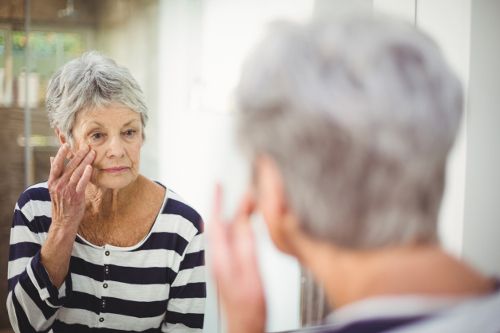
Credit: iStock.com/Wavebreakmedia
Out of the blue, for no reason whatsoever, a part of your face twitches, especially around your lips and eyes.
Has this ever happened to you?
Causes of Facial Twitching
Facial twitching is a very common occurrence. It could be because of fatigue, stress, bright lighting, caffeine excess, alcohol intake, and even a strong wind.
But if the facial twitching happens very frequently, it could be because of a condition called hemifacial spasm. And, it is commonly seen in adults over 40.
As the name suggests, the condition is caused by spasms on one side of the face. It happens when the facial nerve on the affected side is compressed or irritated due to inflammation, injury, or a tumor.
But, in some cases, there may not be any apparent cause. This is known as idiopathic hemifacial spasm.
The most common symptom of hemifacial spasms is twitching on one side of the face, as pressure on the facial nerve affects muscle control. While the spasms may or may not be accompanied by pain, the twitches could hamper clear vision and speech.
In a typical hemifacial spasm, the muscles around the eyes are affected first, followed by muscles of the lower face. However, at times, the order of appearance could be reversed.
Again, the twitches can be triggered by extreme fatigue and stress. And in many cases, the spasmodic episodes overlap and become one continuous twitch marathon.
How to Treat Facial Twitching
As facial twitches could result from a wide spectrum of causes, it’s important to confirm a diagnosis before treatment.
A hemifacial spasm is usually confirmed by an electromyogram (EMG). And a magnetic resonance imaging (MRI) test can help find the cause of the nerve compression.
While your doctor suggests the right course of treatment based on the cause, these simple tips could help speed up the recovery process.
- Try deep breathing exercises and meditation to help reduce stress and relax the muscles.
- Relax the muscles by massaging the affected area gently with diluted clove essential oil.
- Replace your coffee with tea, especially green tea, as caffeine can act as an irritant (fresh fruit juices are also a great substitute for your daily cup of joe).
- Do facial exercises to help strengthen the affected muscle, but do them only between spasms and not during.
- Place a warm compress on the affected area to help release spasms.
- Make sure you get seven to eight hours of refreshing sleep every night.
Remember, while the above tips can give you temporary relief, it is important to find the cause of the problem and treat it—rather than to just treat the facial twitch.
Related Articles:
Eye Twitching: Causes and Natural Treatments
Why Your Left Eye is Twitching
Lip Twitching Meaning, Causes, Treatment, and Superstitions
Sources:
“Involuntary Facial Movements (Hemifacial Spasm),” Cleveland Clinic, December 31, 2015; https://my.clevelandclinic.org/health/articles/involuntary-facial-movements.
Rubin, M., “Hemifacial Spasm,” MSD Manuals; http://www.msdmanuals.com/home/brain,-spinal-cord,-and-nerve-disorders/cranial-nerve-disorders/hemifacial-spasm.
“Hemifacial Spasm,” American Academy of Neurology; http://patients.aan.com/disorders/index.cfm?event=view&disorder_id=938.
